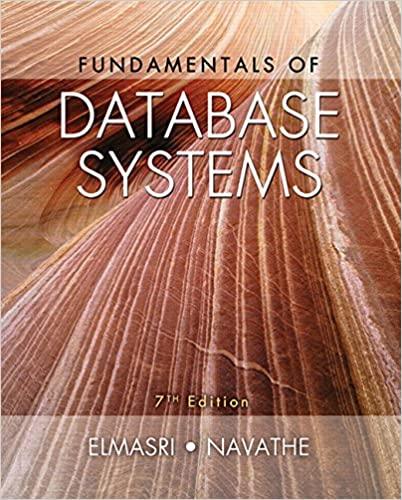Using the DBD system, verify your answers to the following exercises: a. 14.24 (3NF only) b. 14.25
Question:
Using the DBD system, verify your answers to the following exercises:
a. 14.24 (3NF only)
b. 14.25
c. 14.27
d. 14.28
Exercise 14.24
Consider the universal relation R = {A, B, C, D, E, F, G, H, I, J} and the set of functional dependencies F = {{A, B}→{C}, {A}→{D, E}, {B}→{F}, {F}→{G, H}, {D}→{I, J}}. What is the key for R? Decompose R into 2NF and then 3NF relations.
Exercise 14.25
Repeat Exercise 14.24 for the following different set of functional dependencies
G = {{A, B}→{C}, {B, D}→{E, F}, {A, D}→{G, H}, {A}→{I}, {H}→{J}}.
Exercise 14.27
Consider a relation R(A, B, C, D, E) with the following dependencies:
AB → C, CD → E, DE → B
Is AB a candidate key of this relation? If not, is ABD? Explain your answer.
Exercise 14.28
Consider the relation R, which has attributes that hold schedules of courses and sections at a university; R = {Course_no, Sec_no, Offering_dept, Credit_hours, Course_level, Instructor_ssn, Semester, Year, Days_hours, Room_no, No_of_students}. Suppose that the following functional dependencies hold on R:
{Course_no} → {Offering_dept, Credit_hours, Course_level}
{Course_no, Sec_no, Semester, Year} → {Days_hours, Room_no,
No_of_students, Instructor_ssn}
{Room_no, Days_hours, Semester, Year} → {Instructor_ssn, Course_no, Sec_no}
Try to determine which sets of attributes form keys of R. How would you normalize this relation?
Step by Step Answer:

Fundamentals Of Database Systems
ISBN: 9780133970777
7th Edition
Authors: Ramez Elmasri, Shamkant Navathe





